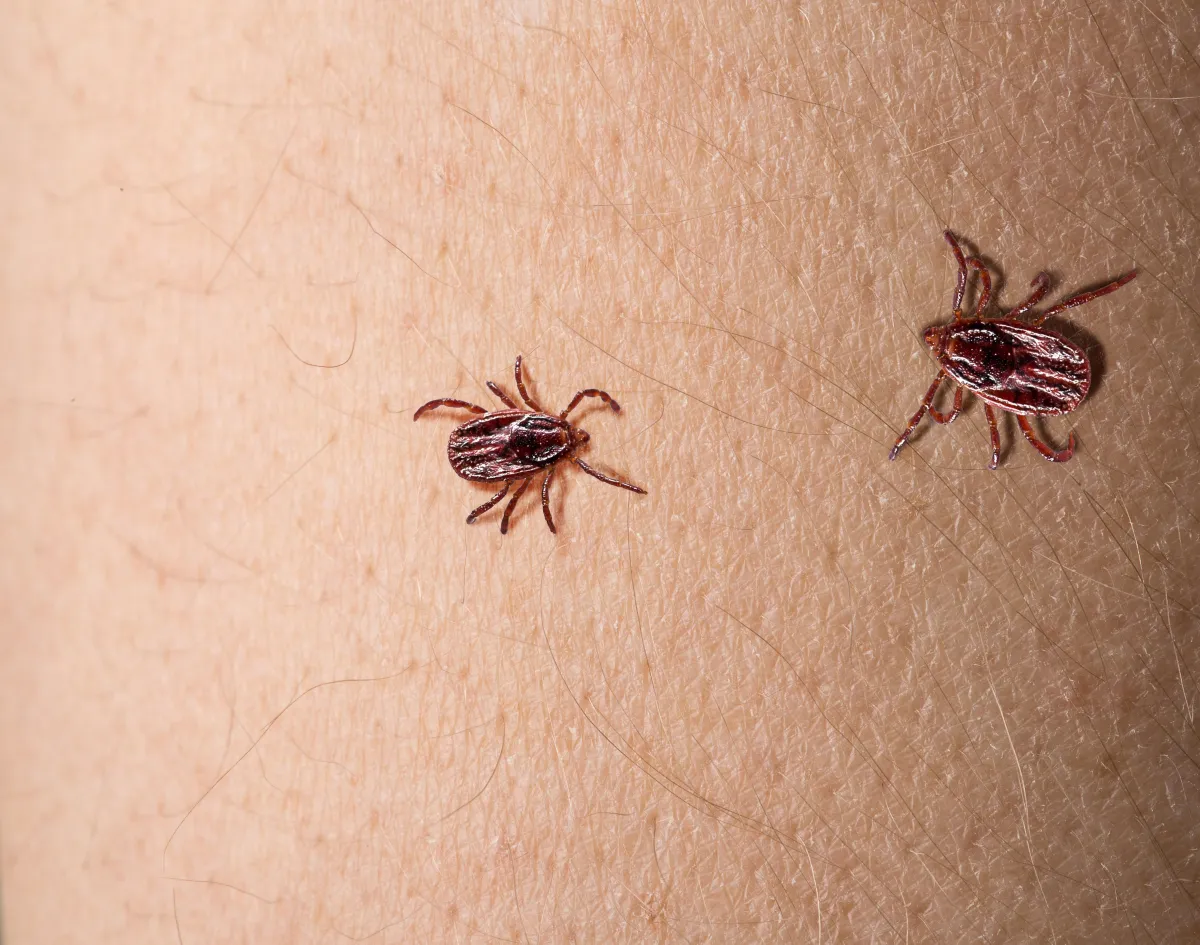Lyme Disease: Gut Health
Lyme disease is a bacterial infection transmitted by black-legged ticks, causing symptoms like rashes, fever, joint pain, and neurological issues, treatable with antibiotics if detected early.

Description of Lyme disease:
Lyme disease is an infectious disease caused primarily by the bacterium Borrelia burgdorferi, and less commonly by Borrelia mayonii. It is transmitted to humans through the bite of infected black-legged ticks, also known as deer ticks, which acquire the bacteria through feeding on infected animals like mice or deer.
Symptoms:
Early Stage (3-30 days post-bite):
Erythema migrans (EM) rash: Typically appears as a "bull's-eye" pattern at the site of the tick bite and occurs in about 70-80% of cases.
Systemic Symptoms: Include fever, chills, fatigue, muscle and joint aches, and swollen lymph nodes.
Later Stage (days to months post-bite):
Severe Headaches and Neck Stiffness Additional EM Rashes: May appear on other body parts.
Arthritis: Characterized by severe joint pain and swelling, particularly in large joints like knees.
Facial Palsy: Drooping or loss of muscle tone on one or both sides of the face.
Cardiac Symptoms: Such as heart palpitations or irregular heartbeat, known as Lyme carditis.
Neurological Symptoms: Including nerve pain, episode of dizziness, inflammation of the brain and spinal cord, and numbness or tingling in extremities.
Causes: Lyme disease is mainly caused by Borrelia burgdorferi bacteria, which are transmitted through bites from infected black-legged ticks.
Potential Treatments: Treatment involves antibiotics, with choices and duration dependent on disease stage and symptoms.
Early Lyme Disease: Oral antibiotics like doxycycline, amoxicillin, or cefuroxime axetil for a duration of 10-21 days.
Late Lyme Disease: More extended antibiotic courses may be necessary, with intravenous antibiotics like ceftriaxone being a potential requirement for neurologic or cardiac manifestations.
Prevention: Preventive strategies include using insect repellent, wearing protective clothing, performing thorough tick checks after exposure to potential tick habitats, and promptly removing any attached ticks. In specific cases, a single dose of doxycycline may be used prophylactically if conditions suggest significant exposure risk.
role of gut imbalances in Lyme disease:
Lyme disease is an infectious disease caused by the Borrelia burgdorferi bacteria, often transmitted through tick bites. The disease can lead to a variety of symptoms, including fever, rash, joint pain, and neurological issues. While the primary focus of Lyme disease is on its infectious nature and its direct effects on the human body, the role of gut imbalances has become an emerging area of interest in understanding the broader implications of the disease.
Introduction to Gut Imbalances and the Immune System: Gut health plays a crucial role in maintaining the body's immune system. The gut microbiome consists of millions of microorganisms that aid in digestion, nutrient absorption, and, importantly, regulation of immune responses. An imbalance in the gut flora, known as dysbiosis, can impair immune function, making the body more susceptible to infections and inflammatory conditions.
Connection to Lyme Disease: Although there is no direct evidence specifically linking gut imbalances to Lyme disease, the impaired immune system resulting from gut dysbiosis can indirectly affect how the body responds to Lyme disease. A dysfunctional immune system may be less effective in combating Borrelia burgdorferi, potentially exacerbating the symptoms or leading to prolonged infections.
Scientific Perspective: Research suggests that a healthy gut microbiome helps in modulating immune responses and keeping systemic inflammation under control. In the context of Lyme disease, if the immune system's homeostasis is disrupted due to gut imbalances, this might lead to inappropriate inflammatory responses, potentially increasing the severity or duration of symptoms.
Improving Gut Health for Better Management: Addressing gut imbalances through diet, probiotics, and lifestyle changes may help improve overall immune function. These steps could theoretically support the body's ability to handle infections like Lyme disease more effectively. Incorporating foods that promote beneficial bacteria growth, such as high-fiber foods and fermented products, might contribute positively to gut health.
Conclusion: While a direct link between gut imbalances and Lyme disease hasn't been robustly established in scientific literature, the importance of a healthy gut in maintaining an effective immune response cannot be understated. Further research into how gut health influences Lyme disease could provide new insights into managing and potentially mitigating its effects.
